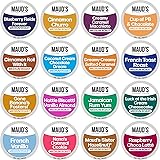A specific ratio, typically 15 grams of water for every one gram of coffee, is generally recommended for optimal French press brewing, translating to approximately one cup of water for three tablespoons of coffee. The video above provides a concise visual guide on how to utilize a French press effectively, demonstrating the simplicity of this revered brewing method. However, mastering the art of French press coffee involves understanding several nuances that significantly impact the final taste profile.
For those new to the world of home coffee brewing or perhaps looking to refine their technique, the French press offers a uniquely rich and full-bodied coffee experience. Its appeal lies in its straightforward design, allowing coffee grounds to fully immerse in water, extracting a comprehensive range of flavors and aromas. This method is often favored by connoisseurs who appreciate a brew that retains its natural oils and sediment, contributing to a distinctive mouthfeel not achievable with paper filters.
Understanding the Heart of French Press Coffee
The essence of a remarkable cup of French press coffee often resides in understanding a few fundamental principles. Unlike drip coffee makers, where water passes through grounds quickly, the French press facilitates a prolonged immersion, demanding precise attention to grind size, water temperature, and steeping duration. These elements collectively dictate the strength, bitterness, and overall balance of the brewed beverage.
The Critical Role of Grind Size in French Press Brewing
One of the most important factors for excellent French press coffee is the grind size of your beans. As was highlighted, a very coarse grind is specifically required for this brewing method. Imagine if coffee grounds were too fine; they could easily pass through the metal mesh filter, resulting in a sludgy, silty cup of coffee that is unpleasant to drink. Additionally, a fine grind increases the surface area exposed to water, leading to rapid over-extraction and an overly bitter flavor profile.
Conversely, a coarse grind ensures that minimal coffee fines bypass the plunger’s filter, leaving a clean, clear brew at the top. This larger particle size also slows down the extraction process, allowing for the recommended steeping time without immediately extracting harsh, bitter compounds. It is generally advised that coffee beans are ground fresh just before brewing to preserve their aromatic oils and ensure the best possible flavor.
Achieving the Perfect Coffee-to-Water Ratio
The coffee-to-water ratio is another pivotal component for crafting exceptional French press coffee. The video mentions the widely accepted 1:15 ratio, where one gram of coffee is paired with fifteen grams of water. This specific proportion is considered a good starting point for a balanced and flavorful cup, though it can be adjusted slightly to suit individual preferences for strength and intensity.
To put this into practical terms, using a scale for precision is highly recommended for consistent results. For instance, if you desire approximately 300 grams (about 1.25 cups) of coffee, 20 grams of coarsely ground coffee would be measured out. Without a scale, the guideline of three tablespoons of coffee per cup of water provides a convenient approximation. Experimenting with ratios, perhaps going to 1:14 for a stronger brew or 1:16 for a lighter one, is often encouraged for personal taste discovery.
The Significance of Water Temperature
While not explicitly covered in the video, the temperature of the water used plays a crucial role in the extraction process for French press coffee. Ideally, water heated to approximately 200°F (93°C) is preferred; this is just off the boil. Water that is too hot can scald the coffee grounds, leading to an acrid or burnt taste, effectively destroying the delicate flavors.
Conversely, water that is too cool will result in under-extraction, producing a weak, sour, or flat-tasting coffee because the desired flavor compounds are not adequately dissolved. Allowing boiling water to sit for about 30-60 seconds after removing it from the heat source typically brings it into the optimal temperature range. This seemingly minor detail can profoundly affect the nuanced flavors that are extracted from your carefully selected beans.
Step-by-Step Guide to Brewing with a French Press
The process of brewing with a French press, as shown in the video, is straightforward but benefits from attention to detail at each stage. Adhering to these steps ensures a consistently delicious and satisfying cup of coffee every time you use your French press.
1. Preheat Your French Press
Before adding any coffee grounds, it is good practice to preheat your French press. Pour a small amount of hot water into the glass carafe, swirl it around, and then discard it. This step helps maintain the water temperature during brewing, preventing it from dropping too quickly once it comes into contact with the cold glass. Maintaining a stable temperature is essential for a consistent extraction of flavors.
2. Add Coarsely Ground Coffee
Measure your freshly ground, coarse coffee according to your desired ratio, typically 1:15, and carefully add it to the bottom of the preheated French press. Ensuring the correct grind size here is paramount, as discussed earlier, to avoid issues with filtration and over-extraction. Distributing the grounds evenly at the bottom can aid in uniform saturation.
3. The Initial Pour and the Bloom
Pour just enough hot water (at 200°F or 93°C) to saturate all the coffee grounds, usually about twice the weight of the coffee. This initial pour allows the coffee to “bloom,” releasing trapped carbon dioxide gas and beginning the extraction process. This blooming phase should be allowed to sit undisturbed for about 30 seconds, a critical step for developing the full flavor potential of the coffee.
4. The Main Pour and Steeping
After the bloom, gently pour the remaining hot water into the French press, ensuring all grounds are immersed. Place the plunger lid on top of the carafe, with the mesh filter just resting on the surface of the water, not yet pressing down. This allows the coffee to steep undisturbed for the recommended duration, typically around four minutes, as indicated in the video. Deviating too much from this steeping time can lead to undesirable flavors; shorter times result in weaker coffee, while longer times can lead to excessive bitterness.
5. The Slow and Steady Plunge
Once the four-minute steeping time has elapsed, it is time for the characteristic plunge. Slowly and steadily press the plunger straight down, applying gentle, even pressure. This action separates the coffee grounds from the liquid, pushing them to the bottom of the carafe and leaving the brewed coffee ready to be poured. A plunge that is too fast can disturb the coffee bed, forcing fines through the filter and resulting in a cloudy or sludgy cup. Conversely, a plunge that is too slow might allow further extraction of undesirable compounds.
6. Serve Immediately and Clean
As soon as the plunger reaches the bottom, pour your fresh French press coffee into a preheated mug. It is generally advised that coffee should not be left in the French press with the grounds after brewing, as continued contact will lead to over-extraction and an increasingly bitter taste. Immediately clean your French press after use to prevent coffee oils from building up, which can impart stale flavors to future brews. Disassembling the plunger and washing all parts thoroughly is recommended for maintaining cleanliness and optimal performance.







